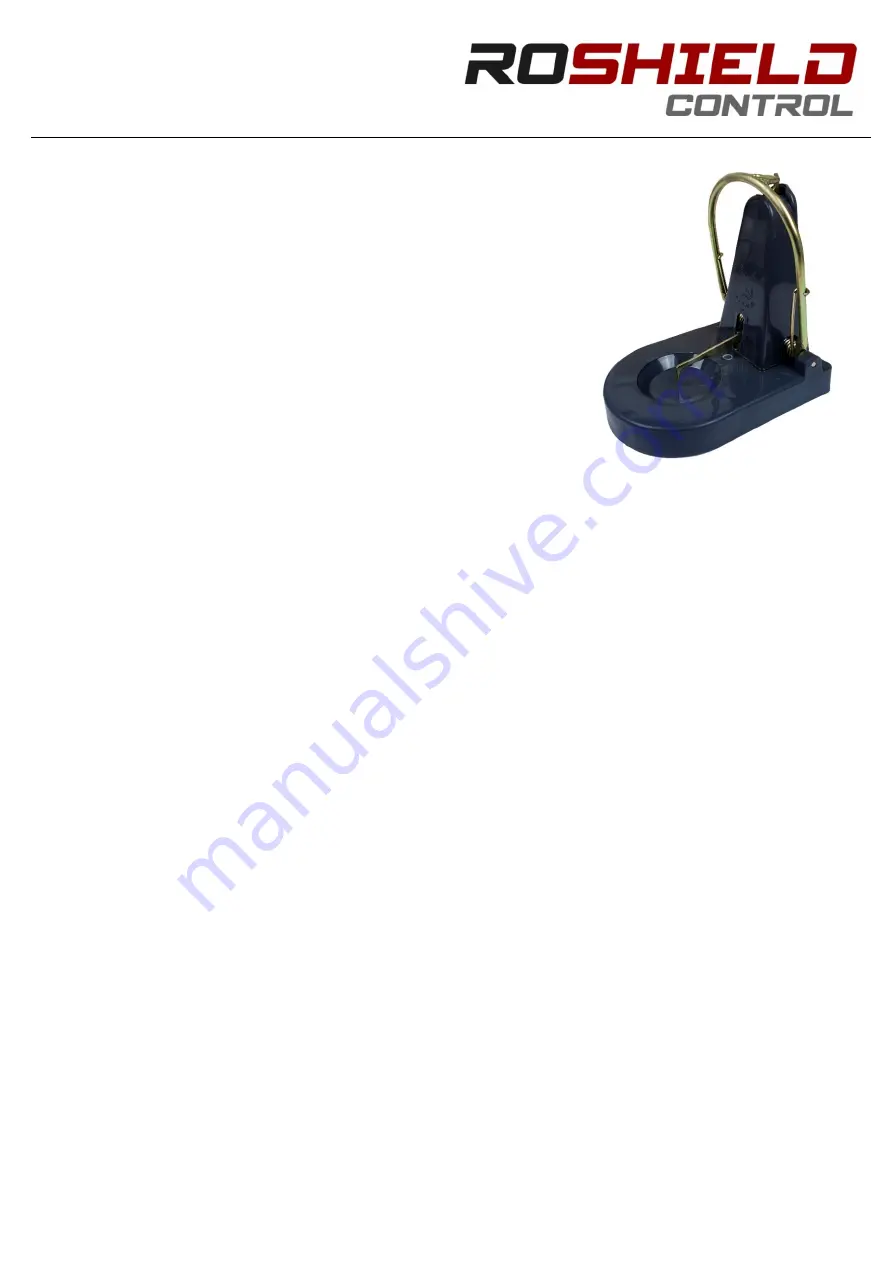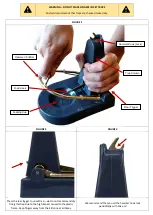
BLACK CAT RAT TRAP
INSTRUCTIONS
The Black Cat Rat Trap is a powerful trap for killing rats. It is important that this
trap is kept away from children and non-target species at all time as this trap can
cause significant damage.
We recommend placing the trap directly within the target rodent’s main
habitation area, this is normally an attic space or under floorboards. This will
significantly reduce third party access. Placing the trap in open areas should not
be undertaken without the use of an additional protection device to limit access.
Before undertaking any trapping, it is important that any competing food
sources are identified and removed as otherwise they may ignore alternative
foods placed within an otherwise safe environment.
This trap works differently to other traps and actually requires the bait on the
food hook to be lifted before activation of the hammer, the opposite of standard
rat traps. This results in a slightly longer process from acceptance to kill however
can result in significant more catches and the possibility of multi-kills at one time
when using in large infestation areas.
The type of bait used within the trap will vary depending on the individual however as a general rule for rats we recommend using
a piece of apple attached to the main food hook followed by a spread of oats or similar loose grain to the feeding cup.
Before placement of the traps survey the environment and look for signs of activity, these maybe holes under the flooring or
insulation in the attack. A suitable place to set a trap would be a couple of feet away rather than directly in front that may make an
unwelcome obstacle.
Setting the trap
1.
Firstly, before you set the trap it’s important to place the bait on the food hook and the inner cup. It’s important that the
bait should not touch the trap body or prevent the upwards motion of the food hook.
2.
Before setting the trap check that the hammer lock is in the correct position. The hammer lock should be in the forward
position as shown in figure 3 (see overleaf). If the hammer lock is in the upright position, press the rear trigger to release.
3.
To lock the hammer, kill bar in the hook, lift the hammer as show n in figure 1. You should firmly hold the rear trigger
tower to prevent any unnecessary movement. The hammer bar will click on to the hammer hook and lock into a primed
position.
4.
At this point its important not to place fingers within the kill radius of the hammer bar.
5.
Carefully position the trap into the infestation area. Only hold the trap from the rear tower, with fingers away from the
hammer bar.
6.
Once set place a small amount of bait approx. a few cm’s away and then some additional bait in a few locations adjacent
to any holes and nesting materials. This will catch the rats initial attention and help encourage further investigation.
7.
Check the trap twice daily and remove the bodies as soon as possible to prevent trap shyness.
8.
To unset the trap, press the trigger (see figure 2).
We recommend lubricating the hammer hook catch regularly (see figure 3) with olive oil.
Rats and mice are extremely cautious creatures and are wary of new items that appear in their environment and so it may take
several days before they will enter the traps. This is common and not a sign of a defective product.
Trapping programs should be implemented for at least four weeks before considering alternative options.
When the trap is no longer active and no signs of rat or mouse activity are present this is a good indication that the infestation has
been eradicated, at this point the trap should be removed or deactivated.











